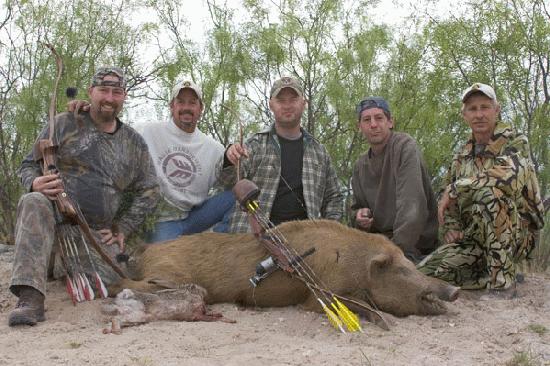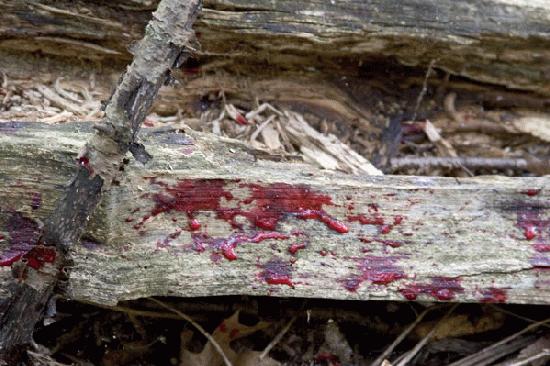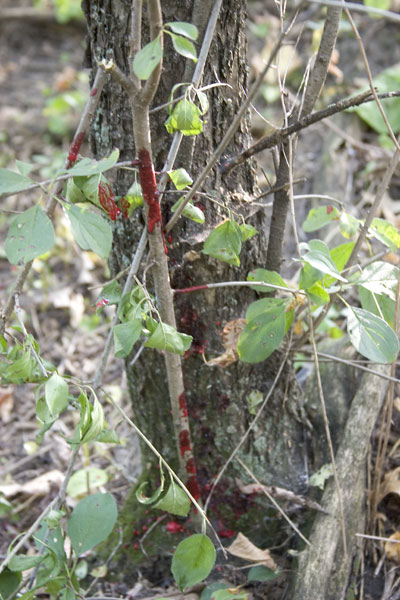Forum Replies Created
-
AuthorPosts
-
Fair enough, so here’s the Cliffs Notes version:
-We all want the best arrow we can shoot.
-We sometimes go about finding it in different ways.
-Life’s good, we’re having fun, and there’s no shortage of venison in our freezers.
That will be ten dollars, please. 😀
Pothunter,
That’s a great point. I know that personally, I can see fish-tailing issues (brace height, spine, centershot etc.) much easier than I can detect porpoising problems (nock height) while watching my arrows fly. Maybe it’s because the natural flight of the arrow takes it up and down through our vision, which may make detecting porpoising more difficult. But if I’m standing next to someone and watching their arrows fly, I can see porpoising very easily.
I don’t know how many times I’ve watched someone shoot and asked them if they knew their arrows were porpoising, but I can probably count on one hand the number of times I’ve heard that question answered with a “yes.”
A few years ago I was stump shooting and couldn’t figure out why I kept hitting low. Figuring maybe my distance estimation went haywire, I measured off some basic yardages (20, 25, 30 etc.) and shot. My arrows looked like they were flying great, but I had to add 5 yards to my aim in order to hit anything (i.e. shoot a 20-yard target as if it were 25 yards). After about an hour of frustration, trying to figure out what had changed in my form, I finally broke out a bow square and checked my nock point. It had slid about a quarter-inch up my new super slick Fastflight serving.
I moved my nock point to its proper location, torqued it down with some nock pliers and found I could still slide it up and down a bit. Right there on the tailgate of my truck I stripped off that slippery Fastflight and redid my string with a serving material I had been previously using called Polygrip (not the denture stuff, I may be growing gray hair but I’m not that old…yet). When I was done reserving my string and resetting my nock point, my arrows were back to hitting where they should.
I had a major tuning issue, and like a lot of people, I wasn’t able to detect it simply by watching my fletched arrows fly. Lesson learned, and as a result I frequently check both my brace height and nock point, and routinely shoot a bare shaft or two during practice sessions. As a matter of fact, if you ever see me at a shoot, you’ll notice I always have a bow square and bare shaft in my target quiver.
Steve,
I certainly applaud you for spending 15 years butchering deer for people. I have an acquaintance who does that, and after hearing his stories I think I’d have to be nearly destitute to put up with some of nonsense he sees every year—deer not field dressed or looking like they were gutted with a garden tiller, rotting deer, and hunters who get angry when they don’t get 100# of meat from a 110# doe. Every year I teach a few people how to butcher their own deer, but I refuse to do the work for them and won’t accept any money. You’re a more patient man than I.
With respect to tuning, I remember when Ken Beck gave a seminar at Comptons a few years ago. After his talk he offered to spend time on the practice range with anyone wanting tuning help. He had a huge display of wood, carbon and aluminum shafts—all spines, lengths, and point weights. All folks had to do was tell them what arrows they were shooting and Ken could hand them an identical bare shaft.
For the better part of a few hours I watched a steady parade of archers veer bare shafts is every possible direction. At 10 or 15 yards, very few hit within a foot of their fletched arrows. On the whole, I’d have to say that properly tuned setups are much more the exception than the rule.
Compound users don’t fare much better, in my opinion. I remember 20 years ago when every local range had a paper-tuning frame, and there was usually a long line of people waiting to use them. These days, bow tuning seems to consist of having a shop employee level the nock point, eyeball the centershot, and declare it tuned. And we wonder why people can’t seem to get an arrow through a whitetail?
I think it’s commendable that you tune your setup with such precision. I wish everyone did that. Unfortunately, far too often, folks simply use whatever arrows someone tells them are correct for their draw length and weight, and finish up by tinkering until they “look” like they’re flying straight. Then we see a plethora of threads about how this or that broadhead wind planes, which should be a glaring red light that the shooter has a huge tuning problem. Why do you think highly vented broadheads are so popular? Because they are more forgiving of poor tuning, thereby giving the impression that they “fly better.”
One of the things I appreciate about forums such as these is the ability to read about and learning from other peoples’ experiences. I completely believe your accounts of hunters you know who do not routinely get pass throughs on deer. Assuming we’re not talking about poor arrow selections (300-grain arrows and 2” mechanical heads, for example), I have to honestly admit that I’m at a loss to offer an explanation. They just don’t match my experiences or those of most people with whom I hunt.
But if those experiences were mine, I would definitely be in search of a solution. So with that, I again commend you on your quest and look forward to reading your updates. If your journey helps others along the way, as I’m sure it will, then your time will be all that much more well spent.
in reply to: Whitetail for Ashby study #18355That’s a dandy! Congrats.
Steve,
I’m enjoying this thread, but there is one major issue that seems to stand out to me in discussions of this sort: bow tuning.
Ashby cites proper tuning as #2 on his top 10 list of factors influencing penetration. Yet, in probably 100 or more Ashby threads I’ve read over the years, this fact seems to be consistently overlooked. To date I have yet to read a thread or hear a discussion where someone says, “I just read the Ashby Report and would like to learn more about bow tuning.”
As a result, I suppose I could assume that proper bow tuning is a non-issue because people have already achieved that goal. But after spending a lot of years at various large traditional shoots, watching a number of hands-on bow tuning seminars, and reading countless internet posts about broadheads wind planning or not impacting with field points, I think I can safely call that assumption false.
I remember a few years ago at one such shoot I met a gentleman with a new radical high-speed carbon-limbed R/D longbow. He was pulling upper 60’s for poundage and shooting at least 10 gpp. He said he used 2-blade heads but didn’t like the setup after failing to get pass throughs on two consecutive broadside lung-shot whitetail does.
This confused me quite a bit since by any calculation his setup, at least on paper, was far more lethal than what I used to shoot completely through my bull moose. After watching him shoot, I had my answer; I’ve seen snakes slither with less gyrations than his arrows made in flight. That was yet another example of what I’ve seen time and again throughout the years—otherwise excellent setups getting poor penetration due to a lack of proper tuning. Again, Ashby ranks this as #2 out of 10. One can’t try to run and expect to get anywhere without first learning to crawl.
With respect to your chosen bow weight, you are 100% correct. Poundage in the forties was the standard utilized by whitetail hunters for decades. For anyone to say it’s inadequate, unethical etc. would only demonstrate that person’s tremendous lack of historical knowledge.
My outdoors mentor growing up was my paternal grandfather. At the time of his death in 1988 he had been bowhunting for nearly forty years. His freezer was never empty, and the man’s knowledge of deer and ability to hunt them are things I could only dream of one day approaching. I can still hear the words he told me when I was very young and first took up bowhunting under his guidance, “You don’t need but forty pounds to kill a deer.” He was right.
That being said, my grandfather’s hunting bow for the last twenty-plus years of his life was a 1960’s Root Game-Master pulling 42# at his 26” draw length (Dacron string, of course). I just ran the specs on his last set of hunting arrows; here’s what I found:
Swaged Easton 2016’s (i.e. tapered at the front end with no inserts)
125-grain glue-on 3-blade cut-on-impact heads
460 grains total weight
10.3% FOCThose arrows are nothing fancy, and actually quite normal.
Your friend’s results with his 40# bow and MA3’s do not surprise me in the least They match my grandfather’s experiences with Wisconsin whitetails over nearly forty years of bowhunting. He killed dozens of deer in his life (hunters were only allowed one per year back then) and rarely ever did anything but blow completely through them.
His equipment was the norm for his hunting group, as were his results. Why? His arrows flew absolutely dead straight—proper bow tuning. And that may be why I have shot through a bull moose and heavy bone on the off-side of big game animals consistently while others with more statistically lethal setups have failed to do so. I’m somewhat fanatical about my tuning.
I fully agree with Ashby’s placing of proper tuning at #2 on his list. Without that, the remaining eight factors become a series of Band-Aids to cover a gaping wound. It’s been my experience over the years, listening to fellow bowhunters, that a poorly tuned arrow incorporating all of the rest of Ashby’s guidelines will not even meet the penetration of a normal arrow that flies perfectly straight.
Perhaps this is why I’ve read instances where heavy, EFOC arrows with single-bevel heads are credited for results that some of us with straight-flying standard arrows view as perfectly normal. It’s kind of like when someone says they need a sixty-pound bow because they can’t shoot through a deer with a fifty-pound one, when your friend and most of the people I grew up around shoot through them with forty pounds. Their problem isn’t their draw weight, and it certainly isn’t the animal. There’s another variable in play.
I think all this talk about increased lethality is great. It shows a genuine concern for one’s responsibility to make clean, quick, and humane kills. But one thing we should never do is confuse a person’s reluctance toward our particular change (whatever that may be) for a lack of concern or a lower placement on the ethics or morality scale. The fact of the matter is that you can’t get any more penetration than a total pass through with your arrow stuck in the dirt. When a person consistently gets that result, he’s arrived; he’s at a place for which others are striving. And the last thing we should do is criticize him for taking a different road or driving a different car.
I have had very good luck with Gander Mountain’s TecH20 line of clothing. It’s quiet, windproof, rainproof, warm, and relatively inexpensive. The only downside is that the soft outer layer will pick up burs, so I only use their pants when it’s raining. For dry weather, I’ll wear one of my two TecH20 jackets and a pair of camo soft denim insulated bibs.
in reply to: Practicing with Broadheads #17003Once I satisfactorily prove to myself that my broadheads impact with my field points, I don’t see any value in me continuing to shoot them. If my broadheads don’t impact the same as my field points from point-blank out to 60+ yards, then I know I haven’t done my job with respect to proper tuning and keep working until I get it right. No, I don’t shoot animals that far, but generally speaking if you can do well on a field course—one of my preferred practice routines—20 yards on a whitetail is a slam-dunk.
I used to carry a small notebook, but far too often I’d look up from writing something only to see a deer or some other animal had sneaked by. For the past several years I’ve been using a small digital voice recorder for my field notes. It’s small and sensitive enough to pick up a very quiet whisper. I can actually record notes with a deer under my stand and not have them hear me.
When I get home, I download the audio files to my computer and transcribe them when I get time.
in reply to: help with pigs #59429This past May I had the pleasure of hunting hogs in West Texas with a camp of fine gentlemen. One of the hunters, Brent Hill, took this 225# boar with a 48# Bob Lee recurve and an unweighted carbon arrow tipped with a 1964 Bear Razorhead. After the animal was recovered, Brent took a broadside test shot and easily put his broadhead through both shields.

I saw that thread too, and am glad everything turned out all right for the hunter. I had a similar experience with an elk a few years ago with a 500-grain Beman ICS 340, 20-grain Flightmate adapter and 125-grain Ace Standard head.
I was going to boil the vertebrae clean and send it to Bob Mayo with a little note, but it was completely shattered. The broadhead had smashed through it and gone out the other side of the vertebrae.
in reply to: hunting shows part 2 #48924johnny2 wrote:
Sometimes I wrestle with the reasons I find video hunting so offensive since I really enjoy outdoor literature and would like to write some articles and short stories myself. Are the differences that significant? Am I giving these folks a fair shake? Even trying to justify all they do and looking at other viewpoints what it boils down to is that in my heart and soul I just feel that they are wrong. As I’ve grown older I find that little voice of my conscience is usually right.I often wonder the same thing. I don’t find hunting videos offensive, per se, but I do find most of them rather unfortunate. I used to watch the Outdoor Channel and Versus a lot, and then I switched satellite providers and packages a few months ago and found that I really don’t miss those channels at all.
While I feel there are a lot of good shows and DVD production companies out there (Bowhunter Magazine’s show, Easton’s show, and Denny Sturgis’ DVDs for example), I just don’t care for most of the hunting I see on TV. Perhaps the explosion in the number of shows and videos over the past ten years has lead to a lot of “low-quality” work, or maybe it’s that these days everyone with a weapon and a camera thinks he/she is a videographer. And if that person has internet access, they can put their work out there for everyone to see, good, bad or otherwise.
The way I see the difference between videos and literature is that the enjoying the written word requires creative participation. You can’t crack a book or magazine and turn off your brain. The author can only describe what’s taking place. Readers have to create the visual imagery on their own. It somewhat puts the readers into the hunt, instead of merely watching it on a TV screen. Maybe that’s why I enjoy reading books more than watching television. It puts my creativity into high gear, instead of slamming it into park.
in reply to: 2 Blade Blood Trails? #48906Wary Buck,
I couldn’t agree more. Over the years I’ve had near identical hits with identical heads leave very different blood trails.
This particular deer had me scratching my head a bit. It was a 17-yard right broadside shot, and I watched the arrow zip through tight to the front leg about a third of the way up. Granted, the impact was about 2” lower than I wanted, but I knew it would still take out both lungs and probably the heart.
Since I’ve been using 2-blade heads, I can’t recall any deer I shot through both lungs and didn’t see or at least hear go down. But this one ran off, and then everything went silent. So I gave it a half hour and started tracking.
The buck made it about 120 yards before going expiring, which while being perfectly acceptable, was a lot longer than I’ve come to expect. When I found the deer, there wasn’t a drop of blood on its mouth or nose, and it should have looked like it went bobbing for apples in cherry Kool-Aid. Upon field dressing, I figured out the problem.
When you look at a deer’s lungs, they appear to have three lobes—front, middle and rear. But this deer had a deformed left lung. Instead of having a full front lobe, it had only the top ridge. My arrow passed through the front lobe of the entrance side lung, the center of the heart, and through where the front lobe of the left lung should have been. Essentially, the deer was hit through one lung and the heart, despite what should have been both lungs and the heart. Sometimes, strange things happen.
in reply to: 2 Blade Blood Trails? #48051Photo 3 of 3:
 in reply to: 2 Blade Blood Trails? #48050
in reply to: 2 Blade Blood Trails? #48050Photo 2 of 3:
 in reply to: 2 Blade Blood Trails? #48049
in reply to: 2 Blade Blood Trails? #48049Jesse Minish wrote: I have read a lot about guys saying they shoot 3 blade broad heads or 2 blades with bleeders because you can not get a good blood trail with a 2 blade head. I was just wondering if most of you agree with this?
Generally speaking, I don’t photograph blood trails or wounds. As a matter of fact, I go to rather extreme lengths to get any hint of blood out of my photos. But yesterday was opening day of deer season in Wisconsin, and as I was leisurely walking along my 2-blade blood trail (1 3/16” double bevel), I remembered this thread and decided to break my own rule of photography.
There was copious blood at the shot location, and more than enough to easily follow to my deer. Like I posted earlier, I don’t worry about having enough blood on the ground from 2-blade heads.
Photo 1 of 3:

-
AuthorPosts

